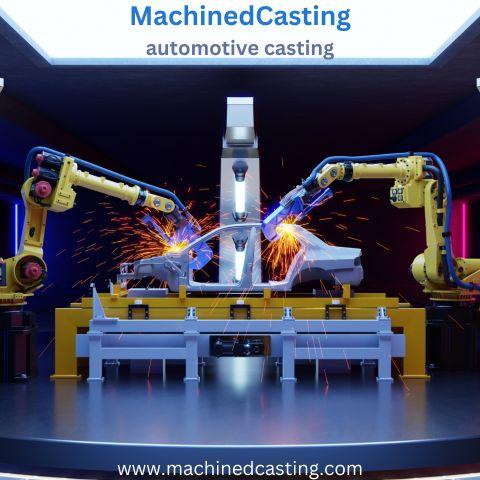Automotive casting plays a vital role in the manufacturing of vehicles, providing essential components with precision and durability. Whether it's engine blocks, transmission cases, or suspension components, mastering the techniques of automotive casting is crucial for ensuring the quality and performance of vehicles. In this guide, we'll delve into the intricacies of automotive casting, from understanding the process to optimizing designs for efficiency and effectiveness.
Understanding Automotive Casting: Automotive casting is a manufacturing process where molten metal is poured into a mold cavity, allowed to solidify, and then extracted to form the desired component. There are several casting methods employed in the automotive industry, including sand casting, die casting, and investment casting. Each method has its advantages and is chosen based on factors such as cost, complexity, and desired material properties.
Optimizing Designs for Casting: Designing components for automotive casting requires careful consideration of various factors to ensure optimal results. One crucial aspect is the design of the mold, which must allow for proper metal flow and solidification without defects. Engineers utilize computer-aided design (CAD) software to create intricate mold designs that minimize casting flaws and maximize efficiency.
Another consideration is the selection of suitable materials for casting. Different metals and alloys offer varying properties such as strength, heat resistance, and machinability. Engineers must carefully choose the material that best suits the intended application while considering factors such as cost and availability.
Process Optimization: Achieving consistent quality in automotive casting relies heavily on process optimization. This includes controlling parameters such as pouring temperature, cooling rate, and mold preheating to ensure uniformity and minimize defects. Advanced techniques such as computer simulation and predictive modeling help optimize the casting process by predicting potential issues and suggesting improvements before production begins.
Quality Assurance: Quality assurance is paramount in automotive casting to guarantee the reliability and safety of vehicle components. Non-destructive testing methods such as X-ray inspection, ultrasonic testing, and magnetic particle inspection are employed to detect internal defects without damaging the cast parts. Additionally, dimensional inspection ensures that components meet precise specifications, reducing the likelihood of assembly issues and part failures.
Continuous Improvement: In the ever-evolving automotive industry, continuous improvement is essential to stay ahead of the competition and meet the demands of customers. This involves embracing new technologies, refining processes, and adopting best practices to enhance efficiency, quality, and sustainability in automotive casting.
Conclusion: Mastering the art of automotive casting requires a deep understanding of the process, meticulous design considerations, and a commitment to continuous improvement. By optimizing designs, refining processes, and prioritizing quality assurance, manufacturers can produce high-quality automotive components that meet the rigorous standards of modern vehicles. With this comprehensive guide, engineers and manufacturers alike can navigate the complexities of automotive casting with confidence and expertise.


